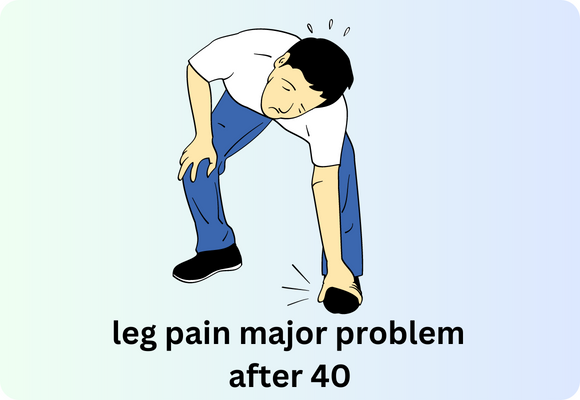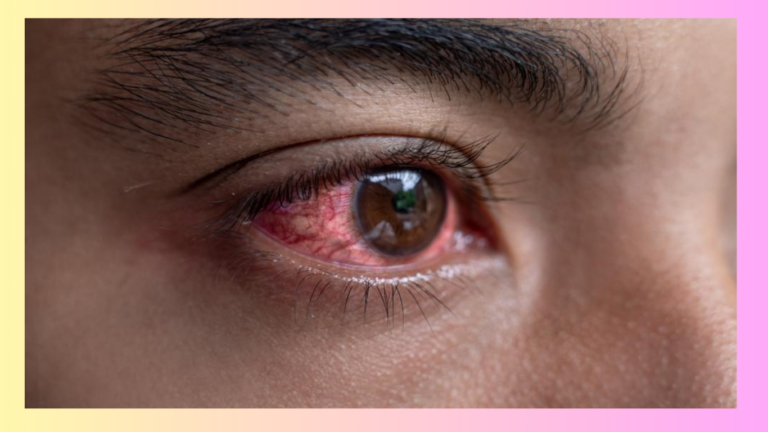Introduction
As we age, our bodies go through various changes, and one common issue that many individuals face is leg pain. This discomfort can greatly impact our quality of life and hinder our mobility, making it essential to find effective remedies. In this article, we will explore practical and natural solutions to alleviate leg pain in individuals over the age of 40, enabling them to lead happier and healthier lives.

Table of Contents
1. Understanding Leg Pain after 40
Leg pain after the age of 40 is a common issue experienced by many individuals. It can manifest as aching, throbbing, or sharp discomfort in the lower extremities, including the thighs, calves, knees, and feet. The natural aging process, along with certain health conditions, can contribute to this pain.
2. Common Causes of Legs Pain
Arthritis
Arthritis, especially osteoarthritis and rheumatoid arthritis, can lead to leg pain in individuals over 40. The degeneration of joint cartilage and inflammation can cause stiffness, swelling, and pain in the legs.
Peripheral Artery Disease (PAD)
Peripheral artery disease occurs when the arteries that supply blood to the legs become narrow or blocked. This condition can result in leg pain, cramping, and fatigue, particularly during physical activity.
Deep Vein Thrombosis (DVT)
Deep vein thrombosis is the formation of blood clots in the deep veins of the legs. It can cause severe leg pain, swelling, and warmth in the affected area. DVT requires immediate medical attention to prevent potentially life-threatening complications.
Muscle Strains and Sprains
Muscle strains and sprains can occur due to overexertion or sudden movements. These injuries can cause localized pain and limited mobility in the legs.
Varicose Veins
Varicose veins are enlarged and twisted veins that commonly occur in the legs. They can cause pain, discomfort, and a heavy sensation in the legs, especially after prolonged standing or sitting.
3. Symptoms of Legs Pain
Leg pain can present itself in various ways, depending on the underlying cause. Some common symptoms include:
- Aching, throbbing, or sharp pain in the legs
- Swelling or inflammation
- Stiffness and limited range of motion
- Weakness or instability
- Numbness or tingling sensations
- Changes in skin color or texture
4. Diagnosing the Root Cause
To effectively manage legs pain, it’s crucial to determine the underlying cause. This requires consultation with a healthcare professional who may perform the following evaluations:
Consultation with a Healthcare Professional
A thorough discussion about the symptoms, medical history, and lifestyle habits can help the healthcare professional understand the individual’s specific situation and identify potential causes of leg pain.
Physical Examination
A physical examination of the legs allows the healthcare professional to assess for any visible signs of injury, inflammation, or deformities. They may also evaluate the range of motion and muscle strength.
Medical History
Understanding the individual’s medical history helps identify any underlying health conditions or previous injuries that may contribute to leg pain.
Diagnostic Tests
Additional tests, such as X-rays, ultrasound, magnetic resonance imaging (MRI), or blood tests, may be recommended to diagnose the specific cause of leg pain.
5. Effective Remedies for Legs Pain
Regular Exercise and Stretching
Engaging in regular low-impact exercises, such as walking, swimming, or cycling, can help strengthen the leg muscles, improve circulation, and reduce pain. Incorporating stretching exercises can enhance flexibility and relieve muscle tension.
Weight Management
Maintaining a healthy weight reduces the strain on the legs and joints, alleviating leg pain. A combination of regular exercise and a balanced diet can support weight management efforts.
Healthy Diet and Hydration
Consuming a nutritious diet rich in vitamins, minerals, and antioxidants promotes overall health and can contribute to reducing inflammation and pain. Staying properly hydrated is also essential for optimal muscle and joint function.
Hot and Cold Therapy
Applying hot or cold packs to the affected area can help alleviate pain and reduce inflammation. Hot packs relax muscles and improve blood flow, while cold packs numb the area and reduce swelling.
Compression Therapy
Wearing compression stockings or sleeves can aid in improving blood circulation and reducing swelling, especially for individuals with varicose veins or venous insufficiency.
Elevating the Legs
Raising the legs above heart level while lying down or using a leg rest can help reduce swelling and improve blood flow, providing relief from leg pain.
Over-the-Counter Pain Relievers
Nonsteroidal anti-inflammatory drugs (NSAIDs) available over the counter, such as ibuprofen or naproxen, can provide temporary pain relief. However, it’s important to follow the recommended dosage and consult a healthcare professional if the pain persists.
Natural Supplements
Certain natural supplements, such as turmeric, ginger, omega-3 fatty acids, and glucosamine, have anti-inflammatory properties and may help reduce leg pain. It’s advisable to consult with a healthcare professional before starting any new supplements.
Massage and Self-Care Techniques https://fitnessspare.com
Gentle self-massage techniques using essential oils or over-the-counter creams can promote relaxation, relieve muscle tension, and reduce leg pain. Practices like yoga, meditation, and deep breathing exercises can also help manage pain and improve overall well-being.
6. Prevention Strategies for Legs Pain
Prevention plays a vital role in minimizing leg pain. Here are some strategies to consider:
Regular Exercise and Strength Training
Engaging in regular exercise routines that focus on strength training and flexibility helps maintain muscle strength, joint stability, and overall mobility.
Proper Footwear and Supportive Insoles
Wearing comfortable shoes that provide adequate support and cushioning can reduce the strain on the legs and promote proper alignment. Custom orthotic insoles may also provide additional support and relieve pain.
Posture Correction
Maintaining good posture while sitting, standing, and walking can help distribute body weight evenly and minimize strain on the legs and joints.
Avoiding Prolonged Sitting or Standing
Taking breaks and avoiding prolonged periods of sitting or standing can prevent leg pain and promote healthy blood circulation. Regular movement and stretching during long periods of immobility are essential.
Taking Regular Breaks and Stretching
Incorporating short breaks into daily routines to stretch and move the legs can improve flexibility, reduce muscle tension, and prevent leg pain.
Maintaining a Healthy Weight
Maintaining a healthy weight through a balanced diet and regular exercise can reduce the stress on the legs and minimize leg pain.
7. Conclusion
Leg pain after the age of 40 can significantly impact an individual’s daily life. By understanding the causes, symptoms, and effective remedies, individuals can find relief and improve their overall well-being. It is essential to consult with healthcare professionals for accurate diagnosis, personalized treatment plans, and guidance on preventive measures.
FAQs (Frequently Asked Questions)
Q1: Can leg pain be a sign of a serious medical condition? Leg pain can be a symptom of underlying medical conditions such as peripheral artery disease or deep vein thrombosis. It’s important to consult a healthcare professional for an accurate diagnosis.
Q2: Can natural supplements effectively reduce leg pain? Some natural supplements, such as turmeric, ginger, and omega-3 fatty acids, have anti-inflammatory properties that may help alleviate leg pain. However, it’s advisable to consult with a healthcare professional before starting any new supplements.
Q3: Are there any exercises that should be avoided if experiencing leg pain? It’s essential to consult a healthcare professional or a qualified physical therapist for personalized exercise recommendations. Certain high-impact activities or exercises that exacerbate pain should be avoided, while low-impact exercises like walking or swimming are generally beneficial.
Q4: How long should I elevate my legs to reduce leg pain? Elevating the legs above heart level for 15 to 20 minutes at a time, several times a day, can help reduce swelling and alleviate leg pain. However, the frequency and duration may vary depending on individual needs and recommendations from healthcare professionals.
Q5: Can massage therapy help with leg pain? Massage therapy can provide temporary relief from leg pain by promoting relaxation, improving blood flow, and reducing muscle tension. It’s advisable to consult a licensed massage therapist for appropriate techniques and guidance.
1. Understanding Leg Pain after 40
Leg pain after the age of 40 is a common issue experienced by many individuals. It can manifest as aching, throbbing, or sharp discomfort in the lower extremities, including the thighs, calves, knees, and feet. The natural aging process, along with certain health conditions, can contribute to this pain.
2. Common Causes of Leg Pain
Arthritis
Arthritis, especially osteoarthritis and rheumatoid arthritis, can lead to leg pain in individuals over 40. The degeneration of joint cartilage and inflammation can cause stiffness, swelling, and pain in the legs.
Peripheral Artery Disease (PAD)
Peripheral artery disease occurs when the arteries that supply blood to the legs become narrow or blocked. This condition can result in leg pain, cramping, and fatigue, particularly during physical activity.
Deep Vein Thrombosis (DVT)
Deep vein thrombosis is the formation of blood clots in the deep veins of the legs. It can cause severe leg pain, swelling, and warmth in the affected area. DVT requires immediate medical attention to prevent potentially life-threatening complications.
Muscle Strains and Sprains
Muscle strains and sprains can occur due to overexertion or sudden movements. These injuries can cause localized pain and limited mobility in the legs.
Varicose Veins
Varicose veins are enlarged and twisted veins that commonly occur in the legs. They can cause pain, discomfort, and a heavy sensation in the legs, especially after prolonged standing or sitting.
3. Symptoms of Leg Pain
Leg pain can present itself in various ways, depending on the underlying cause. Some common symptoms include:
- Aching, throbbing, or sharp pain in the legs
- Swelling or inflammation
- Stiffness and limited range of motion
- Weakness or instability
- Numbness or tingling sensations
- Changes in skin color or texture
4. Diagnosing the Root Cause
To effectively manage leg pain, it’s crucial to determine the underlying cause. This requires consultation with a healthcare professional who may perform the following evaluations:
Consultation with a Healthcare Professional
A thorough discussion about the symptoms, medical history, and lifestyle habits can help the healthcare professional understand the individual’s specific situation and identify potential causes of leg pain.
Physical Examination
A physical examination of the legs allows the healthcare professional to assess for any visible signs of injury, inflammation, or deformities. They may also evaluate the range of motion and muscle strength.
Medical History
Understanding the individual’s medical history helps identify any underlying health conditions or previous injuries that may contribute to leg pain.
Diagnostic Tests
Additional tests, such as X-rays, ultrasound, magnetic resonance imaging (MRI), or blood tests, may be recommended to diagnose the specific cause of leg pain.
5. Effective Remedies for Leg Pain
Regular Exercise and Stretching
Engaging in regular low-impact exercises, such as walking, swimming, or cycling, can help strengthen the leg muscles, improve circulation, and reduce pain. Incorporating stretching exercises can enhance flexibility and relieve muscle tension.
Weight Management
Maintaining a healthy weight reduces the strain on the legs and joints, alleviating leg pain. A combination of regular exercise and a balanced diet can support weight management efforts.
Healthy Diet and Hydration
Consuming a nutritious diet rich in vitamins, minerals, and antioxidants promotes overall health and can contribute to reducing inflammation and pain. Staying properly hydrated is also essential for optimal muscle and joint function.
Hot and Cold Therapy
Applying hot or cold packs to the affected area can help alleviate pain and reduce inflammation. Hot packs relax muscles and improve blood flow, while cold packs numb the area and reduce swelling.
Compression Therapy
Wearing compression stockings or sleeves can aid in improving blood circulation and reducing swelling, especially for individuals with varicose veins or venous insufficiency.
Elevating the Legs
Raising the legs above heart level while lying down or using a leg rest can help reduce swelling and improve blood flow, providing relief from leg pain.
Over-the-Counter Pain Relievers
Nonsteroidal anti-inflammatory drugs (NSAIDs) available over the counter, such as ibuprofen or naproxen, can provide temporary pain relief. However, it’s important to follow the recommended dosage and consult a healthcare professional if the pain persists.
Natural Supplements
Certain natural supplements, such as turmeric, ginger, omega-3 fatty acids, and glucosamine, have anti-inflammatory properties and may help reduce leg pain. It’s advisable to consult with a healthcare professional before starting any new supplements.
Massage and Self-Care Techniques
Gentle self-massage techniques using essential oils or over-the-counter creams can promote relaxation, relieve muscle tension, and reduce leg pain. Practices like yoga, meditation, and deep breathing exercises can also help manage pain and improve overall well-being.
6. Prevention Strategies for Leg Pain
Prevention plays a vital role in minimizing leg pain. Here are some strategies to consider:
Regular Exercise and Strength Training
Engaging in regular exercise routines that focus on strength training and flexibility helps maintain muscle strength, joint stability, and overall mobility.
Proper Footwear and Supportive Insoles
Wearing comfortable shoes that provide adequate support and cushioning can reduce the strain on the legs and promote proper alignment. Custom orthotic insoles may also provide additional support and relieve pain.
Posture Correction
Maintaining good posture while sitting, standing, and walking can help distribute body weight evenly and minimize strain on the legs and joints.
Avoiding Prolonged Sitting or Standing
Taking breaks and avoiding prolonged periods of sitting or standing can prevent leg pain and promote healthy blood circulation. Regular movement and stretching during long periods of immobility are essential.
Taking Regular Breaks and Stretching
Incorporating short breaks into daily routines to stretch and move the legs can improve flexibility, reduce muscle tension, and prevent leg pain.
Maintaining a Healthy Weight
Maintaining a healthy weight through a balanced diet and regular exercise can reduce the stress on the legs and minimize leg pain.
7. Conclusion
Leg pain after the age of 40 can significantly impact an individual’s daily life. By understanding the causes, symptoms, and effective remedies, individuals can find relief and improve their overall well-being. It is essential to consult with healthcare professionals for accurate diagnosis, personalized treatment plans, and guidance on preventive measures.
FAQs (Frequently Asked Questions)
Q1: Can leg pain be a sign of a serious medical condition? Leg pain can be a symptom of underlying medical conditions such as peripheral artery disease or deep vein thrombosis. It’s important to consult a healthcare professional for an accurate diagnosis.
Q2: Can natural supplements effectively reduce leg pain? Some natural supplements, such as turmeric, ginger, and omega-3 fatty acids, have anti-inflammatory properties that may help alleviate leg pain. However, it’s advisable to consult with a healthcare professional before starting any new supplements.
Q3: Are there any exercises that should be avoided if experiencing leg pain? It’s essential to consult a healthcare professional or a qualified physical therapist for personalized exercise recommendations. Certain high-impact activities or exercises that exacerbate pain should be avoided, while low-impact exercises like walking or swimming are generally beneficial.
Q4: How long should I elevate my legs to reduce leg pain? Elevating the legs above heart level for 15 to 20 minutes at a time, several times a day, can help reduce swelling and alleviate leg pain. However, the frequency and duration may vary depending on individual needs and recommendations from healthcare professionals.
Q5: Can massage therapy help with leg pain? Massage therapy can provide temporary relief from leg pain by promoting relaxation, improving blood flow, and reducing muscle tension. It’s advisable to consult a licensed massage therapist for appropriate techniques and guidance.

